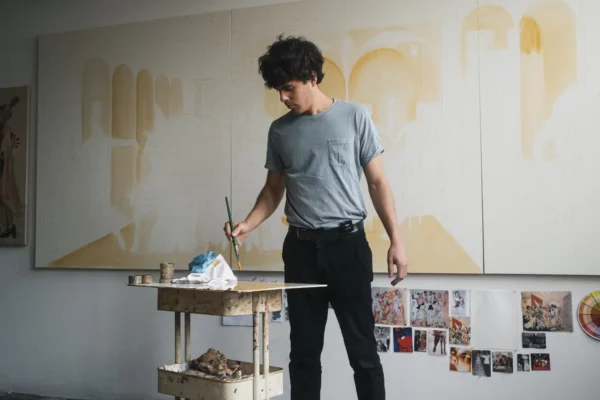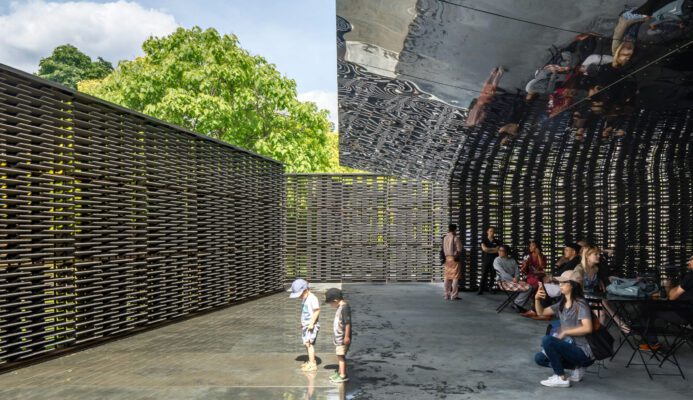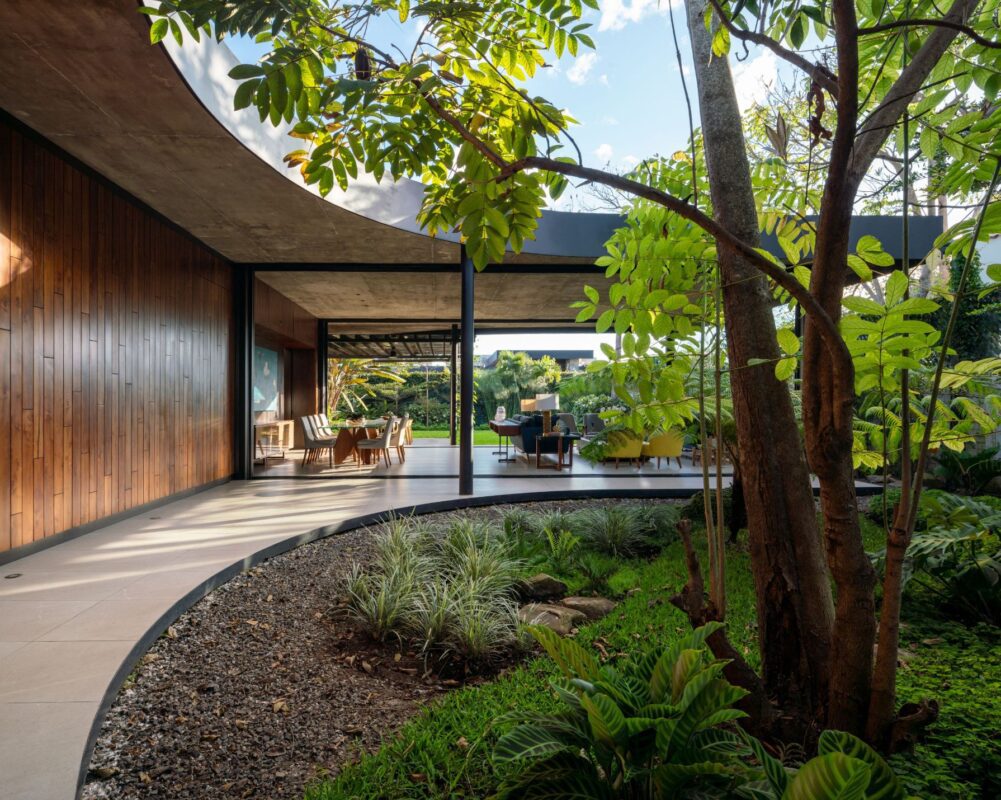
COFFEE WITH
ROBERTO DUMONT: “IN EL SALVADOR WE ARE EXPERIENCING A RESURGENCE OF THE CREATIVE PART”
Name: Roberto Dumont
Profession: Architect, Partner at Cincopatasalgato
Nationality: Salvadoran
Instagram: @5patasalgato
LATINNESS: You’re an architect and partner at the celebrated architecture studio in San Salvador CINCOPATASALGATO. When did you start this project?
ROBERTO: It was actually founded by Jose Roberto Paredes in 2004. I had recently graduated at the time and we shared an office, coincidentally. I left to get my Master’s degree, and when I returned, I incorporated little by little. We were always professionally linked, until we decided to partner in 2013.
More collaborators joined the team that year. Today, we have two new junior partners, two new partners who have just joined, but have worked in the office for a long time, so we are already a little more robust in the partner structure. The year 2013 was important because it’s when the team that’s currently in the office began to take shape.
LATINNESS: It’s an interesting name. Why did you choose this for the firm?
ROBERTO: It’s funny, because it’s a colloquial saying that means you are looking for more than what’s necessary, right? In a slightly comical way, sometimes even absurd. So, the development of the name started from identifying what type of client we wanted. And whoever looked for us, knew, or was open to, experimenting or exploring things that, perhaps, they did not expect, or who allowed us to surprise them a bit. It arose from there, from the interaction that occurs between what clients ask of you and what you want to do and what interests you, as well as from looking for that initial alignment of what attracted us.
I firmly believe that, for a project to be successful and profound, everyone involved has to be committed and in love with it. We want to be in love with the projects we do, so it was a way of channeling everything.

LATINNESS: You define yourselves as personal architecture. What does this mean?
ROBERTO: Personal architecture has a lot to do with the methodology with which we develop, which involves trying to understand well –in the case of our housing clients– the families who are going to live in the projects, of having a series of very deep interviews with them, to know how the couple or the individuals or the whole family works.
The intention is to understand how they perform and what they aspire to. How would you like to live in this new house? But also, what is your culture? What is important to you? What rituals do you have every day? What marks you? Because for us, the fundamental thing is that the house is not a formula to be replicated in composition or functionalities.
In other words, we make an architectural portrait of the family to enhance it with the tools we have at hand. That’s where that notion was born. And we also put it into practice when making commercial projects by thinking of the end user. Understanding who goes to the store, restaurant or bar, and what they want to feel. The idea is to establish relationships, and that’s always been very exciting.
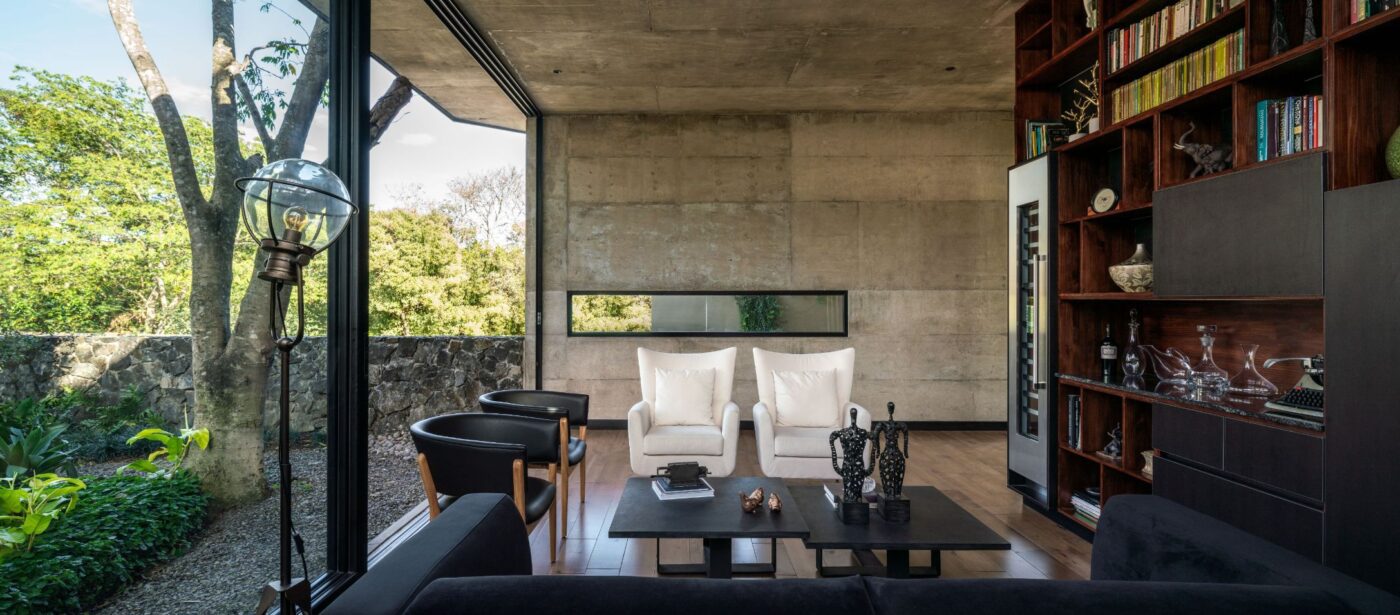
LATINNESS: As architects, how does the collective creative process work?
ROBERTO: We are four partners and there are fifteen people in the studio. The truth is it’s a very flat office, meaning the structure is flat. The design processes are discussed a lot with the senior team, but also with those who have just started working at the office. We try to give design opportunities early on to people who come in. Although there are certain steps you must take to grow professionally in an office, we understand that what motivates the architect is to be able to be hands-on, contributing and giving value in design, which is why we’ve always wanted them to learn to design early, and that their opportunities grow along with their responsibilities.
We like to have people who think differently from us on the team. People who can structure their thoughts well, who can argue their positions well, because we believe that the more points of view and the more opinions there are, the greater the possibility to create a better project, more efficiently.
There are 15 of us, and we work in a room that is 100 square meters in size with a large table that we all sit around and can see what everyone else is doing. It’s a space of unity and openness. This is how we work.
Another thing we have realized, which is important, is that there may be someone within the design committee, so to speak, who is the fresh eyes of the project. Someone who may not be so involved in the day to day, who can criticize the project independently. So they are not in love with it and can understand it coldly, can study it coldly and can judge it coldly. Many times that is not easy, but we believe this dynamic, which generates a bit of tension, is a great plus to the development.
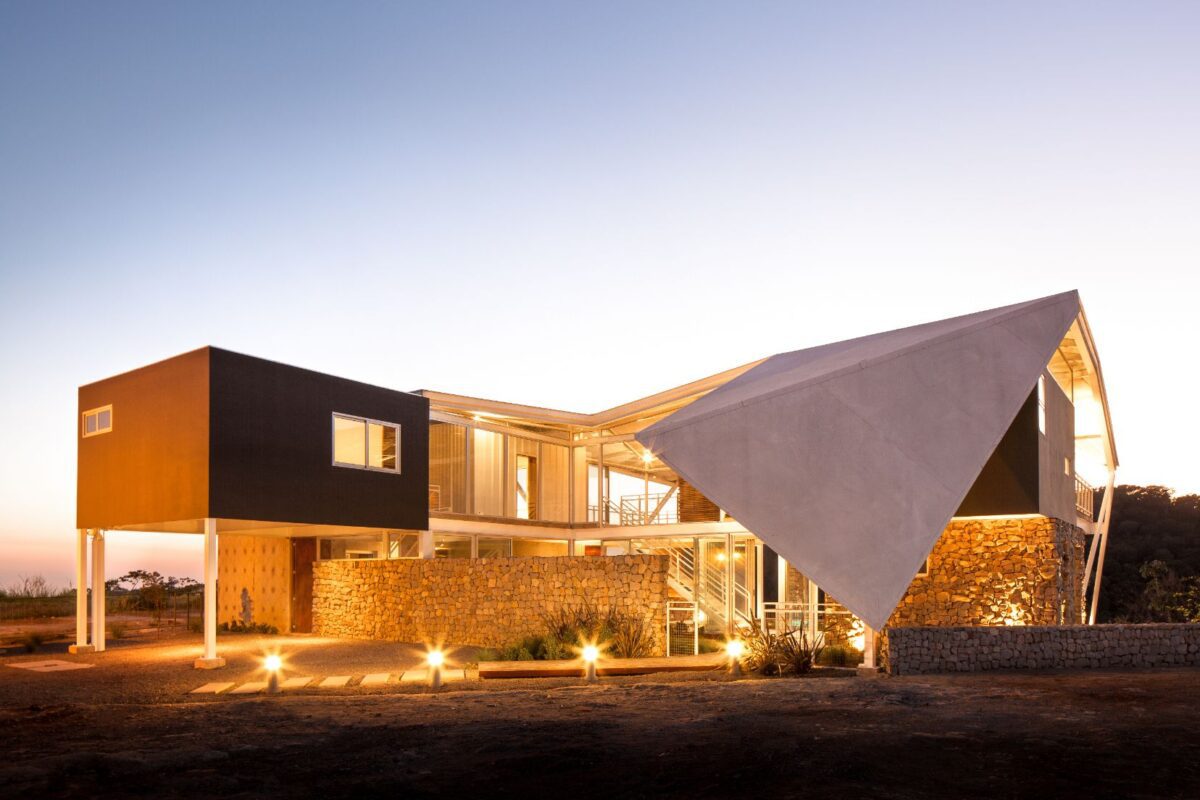
LATINNESS: And the process of creating with a client?
ROBERTO: The most important part, although it may not seem like it, is the interview stage, because thanks to this we are able to synthesize their culture and priorities. The process takes about two years in total; that is, from the beginning of the design until the house is finished. It’s a process in which you learn to work with someone you do not know, and in which you discover what it is that makes them tick, even if he cannot tell you from the outset.
It’s a lot of teasing out information, of trying to understand certain things, and at this point, the most important thing is to always have an open mind. As clichéd as it sounds, it’s critical to keep your ears open and be receptive to whatever they’re trying to say, even if it’s not explicit. For example, things like: “I’m not sure I want to go through here to get over there, but maybe it can work…” That is an indication that something is a bit uncomfortable and that usually precipitates a lot of other things. If you don’t catch it in time, you end up paying for it later. So you learn to read all those signals in order to indirectly provide feedback on the project or design process itself.


LATINNESS: How has your base country and region influenced what you do?
ROBERT: It’s difficult to know how our own culture has influenced us. Rather than observing a culture per se, we try to be self-aware; that is, analyze what our context is. It’s not so much glorifying local culture, but rather celebrating what needs to be celebrated and changing what needs to be changed. And it’s that culture is not static, it’s free flowing. You just have to channel it, without being pretentious and saying “we create culture.”
We began in El Salvador, and about five years ago, we started working outside the country. First in Nicaragua, which is similar to us; then a bit in Guatemala, and now we have some projects in Paraguay, Ecuador, United States and Poland. Since we believe that architecture is somehow rooted in a certain latitude, it’s very important to create teams that can provide us with the knowledge of those areas before we can enter them. In the United States, for example, we arrived with a local partner. The most important thing is to be able to learn the local components as quickly as possible.
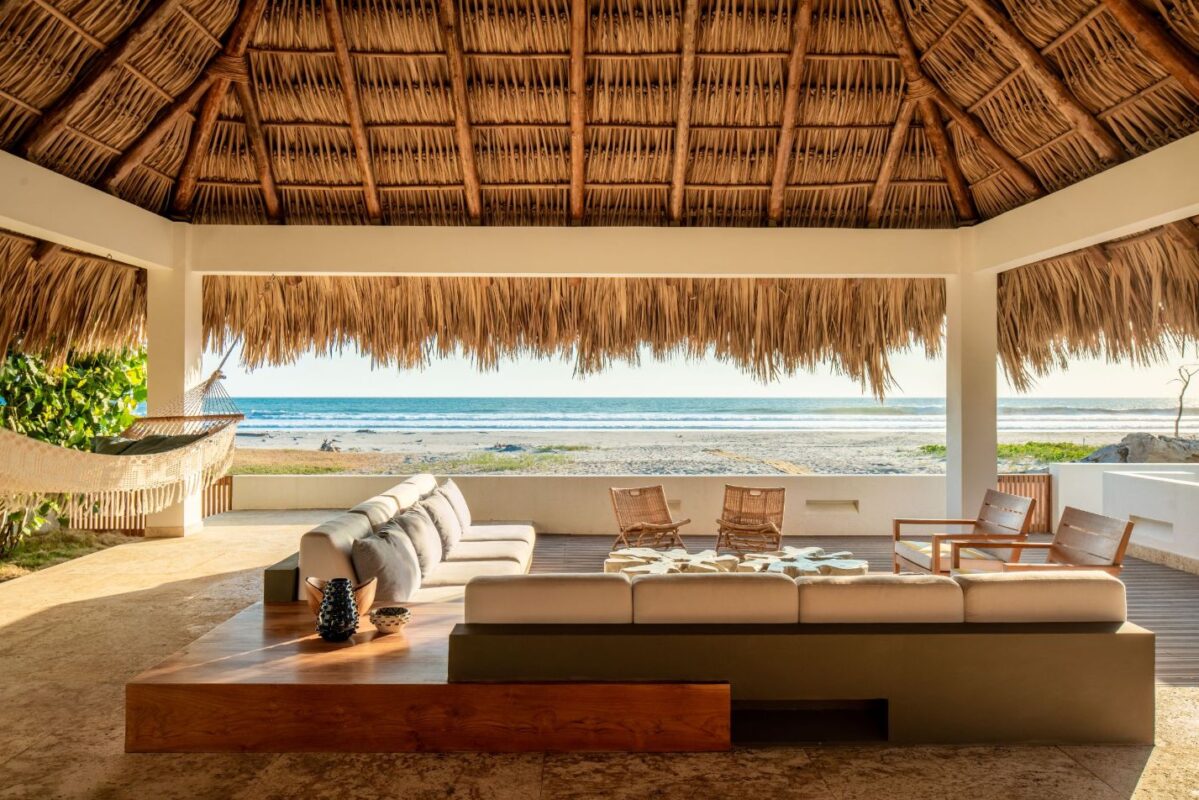
LATINNESS: In terms of design and architecture, you’ve also attracted attention to El Salvador, a small country that might not necessarily be at the top of mind with regard to these two universes. Did you imagine this when starting CINCOPATASALGATO?
ROBERTO: No, not at all. I mean, you can dream about things, but I think the focus was always more on work and quality over everything else. If it came, it would be later, and would be based on that. There is good quality design in El Salvador, and what is emerging is precisely because of that quality that has been growing in recent years at all levels: from architecture to graphic design, and even furniture design. In El Salvador we are experiencing a resurgence of that creative part.
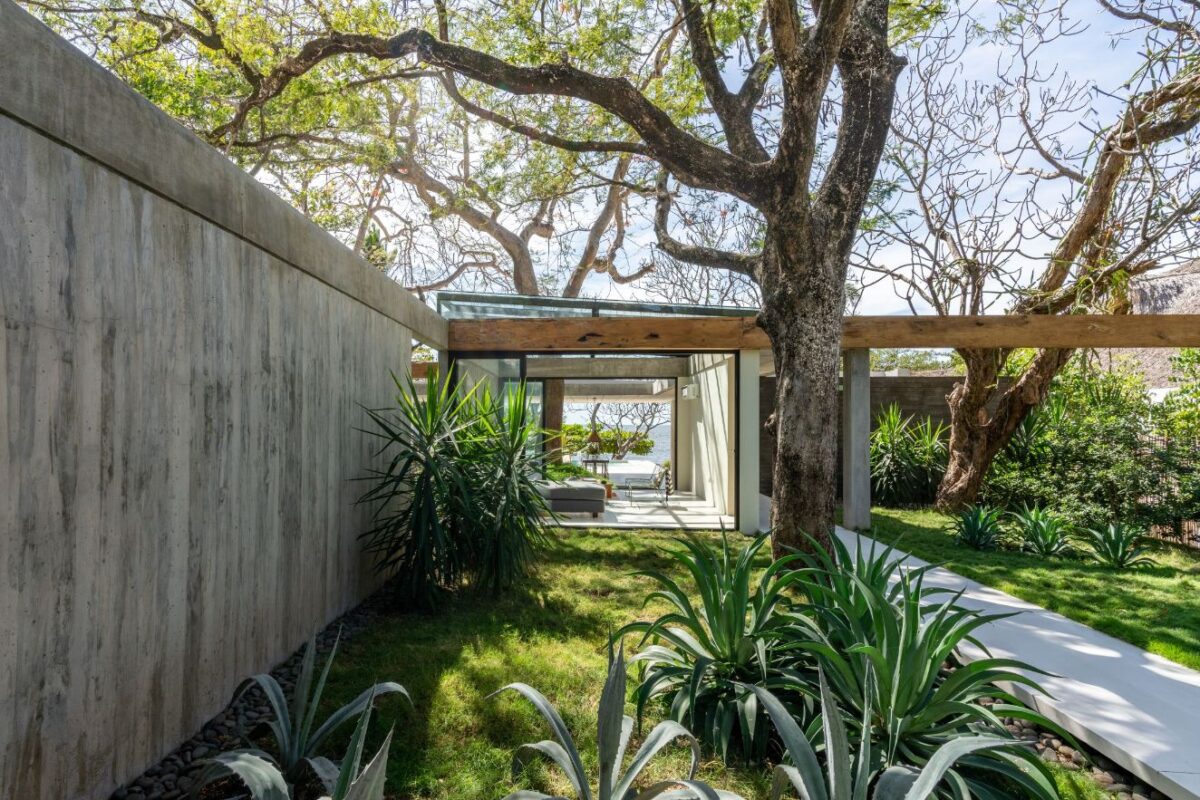
LATINNESS: The firm also presented furniture design pieces at the Salone Satellite. When did you introduce this?
ROBERTO: It was really out of passion, because, if I’m frank about furniture design, it’s something that has meant more money out than money in. We did it because we love it. We started designing houses with the intention of going one step further: the furniture, the dining room, the living room, the table for the living room or the chair for the dining room, because it’s a natural extension of the interior space design, and little by little, we did the transition.
We’ve been to a couple of fairs, and at some point, we did sell chairs and furniture, but now it’s scaled back, just with the projects. We build a house, we fall in love, and then we create the tables or the lamps; we still do it, we love it.
And we like to understand the manufacturing processes because there are “worlds” that you discover in life. For example, that of ceramics. A couple of years ago we got into that, and we wanted to design everything with ceramic. Then we had a wicker period. There is also the plastic, etc. You look at the opportunities that arise in design, but it’s also what you learn, what excites you, and that guides us.

LATINNESS: We recently highlighted a house by Gio Ponti in Venezuela, where the architect had a hand in the art, ceramics, cups, cutlery, everything.
ROBERTO: Well yes, that’s like the heyday of the architect, the God of a space. Frank Lloyd Wright even designed clothes. It’s ridiculous nowadays, but you don’t need the desire to want to design absolutely everything. Not us necessarily, but it’s always cool to collaborate with other people who have that skill set much more grounded and a shared joint vision.
Sometimes we work with interior or garden designers with whom we co-create the concept of the house. They focus on their part, and we focus on what corresponds to us. Those are very enriching experiences.


LATINNESS: How do you see the architecture industry post-pandemic?
ROBERTO: I think the quarantine was a time of introspection, of rethinking what things are important and what are not. Your readjustment depends on where you live. Perhaps I can speak from the context of San Salvador, which is a city with relatively low-density. We have about 2 million inhabitants, although it’s not such a concentrated area. There are still a lot of green areas, not public, but green.
There is a new appreciation for the public area here, which had begun to take place in previous years through a couple of projects that were developed in the city, yet which, at that time, were completely inaccessible. In this case, the role of public areas has been revalued for the community. In other words, from the little park you had on the corner.
How you interact with your community becomes very important, much more than before. Because you are at home all day and ten meters from other families. In my case, I live in a community of about fifty houses, each 200 square meters. When they locked us up, the first thing we did was grab the set up we had in the garden –some old metal furniture from my grandmother– and took it out to the sidewalk. That was our way of appropriating the public space, and generating opportunities for some type of interaction, even if it was visual and five or ten meters away from our neighbors.
For us, I think it will be important to think about the relationship between home and public space, which for a long time, due to security or custom, has always been about having a wall: my house inside and the city outside. There is a hard line or a well marked division. I think we’re going to start seeing more projects with a bit of porosity or softer barriers, which can be very exciting. I was thinking not only at the unit level, but at the community level.

LATINNESS: How interesting!
ROBERTO: I think what we are going to have is a lot of people living in a more intermittent way. I always said that the information revolution was going to decentralize cities, because you could work from anywhere and live anywhere. And it never really happened as everyone concentrated more. Now we can begin to see it a little more, and it might not be permanent, you know? You can decide to live three months in your cabin where you have 30 gigs of internet, and that’s fine … You don’t need more. We’ll see what happens.
There will also be a greater focus on small spaces in the house. Like the one where when you walk in, you take off your shoes and leave them. Maybe that gives an opportunity to make a space, like a threshold, where you sit and have a kind of ritual in which you take off your shoes and clean your hands to enter the house. The more time we spend in a pandemic, the more habits it will create or change. How much our lifestyle is transformed will depend on that. I think it’s exciting to recognize those behavior changes and how you can celebrate those little things, because they are probably worth crystallizing and celebrating.
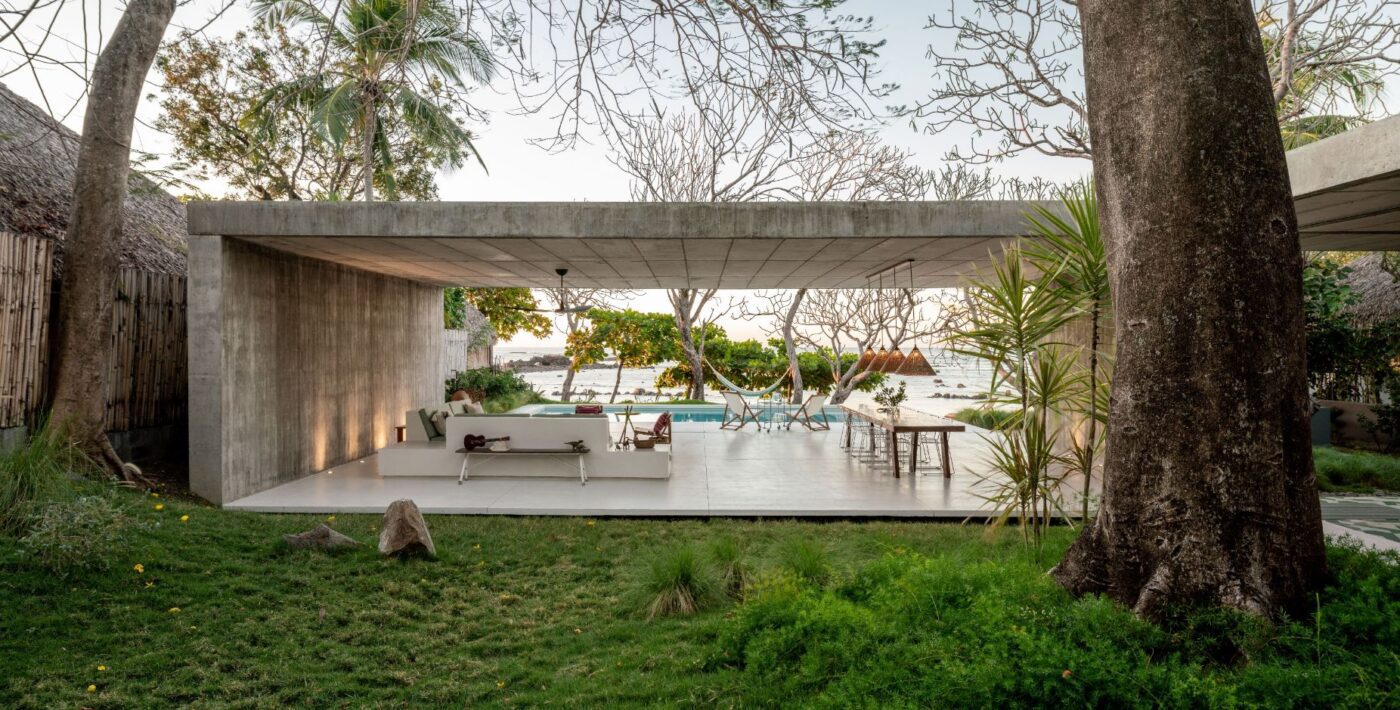
LATINNESS: Very true, there are things we haven’t internalized yet, but in five years we’ll realize how much our lives changed. Do you have a project you’re most proud of?
ROBERTO: There are several, but one in particular. We worked on a project for USAID and for Glasswing, a local NGO, a couple of years ago. It was about the reinvention of a public space dedicated to sports and located in a part of the city that was developed in the fifties. Its infrastructure had deteriorated, as well as the use of the land.
The project expanded an important investment in Cuscatlán Park, which is like Central Park in San Salvador, the most central and largest green area there is. This is the second phase, the sports part that is in deterioration. It was a very exciting initiative for us, because it involved getting to know the communities, making a link with them, understanding how that space worked within the urban fabric, what was the perceived danger in that area and how what we implemented could help reduce this perception or real fear.
More than an important architectural project, the challenge was to understand the software, that is, the operational apparatus of who is going to occupy this space, how it will work, which neighbors inhabit it, to the hardware or the physical construction. That has been the most exciting lately. It’s called the National Gymnasium.
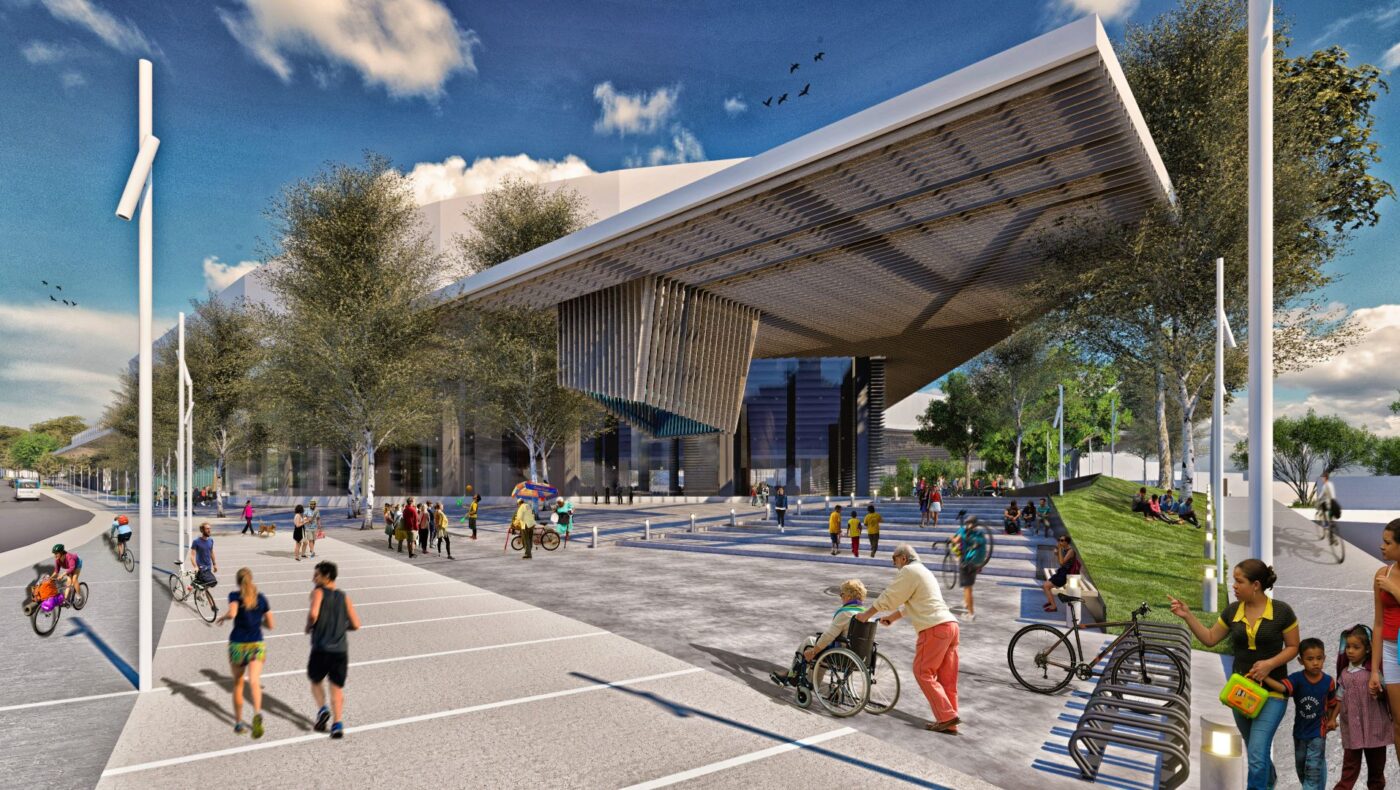
LATINNESS: What advice do you have for young designers and architects?
ROBERTO: I’ve been going back and forth in recent years, and it seems incredible to me that when you study architecture, you never take a class on project management, when as an architect, all you do is project management, in one way or another. I’ve spoken with people from the academy at the local level, because the idea is not to do a master’s degree on the subject, but to understand the logic of decomposing a task into smaller things that are achievable to be able to advance. This is vital.
Another thing is to push someone to have opinions, to form opinions, to promote them well, to support them, but also to strive to develop and communicate them. I want someone to think something through and come to us saying: “I think this solution should be like this and like this, for this and this and this”. That is super important. That critical thinking and independent thinking, when well-directed, is wonderful.
LATINNESS: What are you working on now?
ROBERTO: We are working on several houses and a children’s museum. Also, on a building for Glasswing, a soft skills development center for at-risk youth. We’re also working on a couple of apartment buildings and shopping centers. I have a very interesting project, which is a building in virtual reality, an experience of a client with whom we are co-creating something in virtual reality. It’s a design challenge in which you are not constrained, which is what usually happens because of costs, structure and all that. It’s like experience design.
Photos by Bax Towner, courtesy of Cincopatasalgato.


